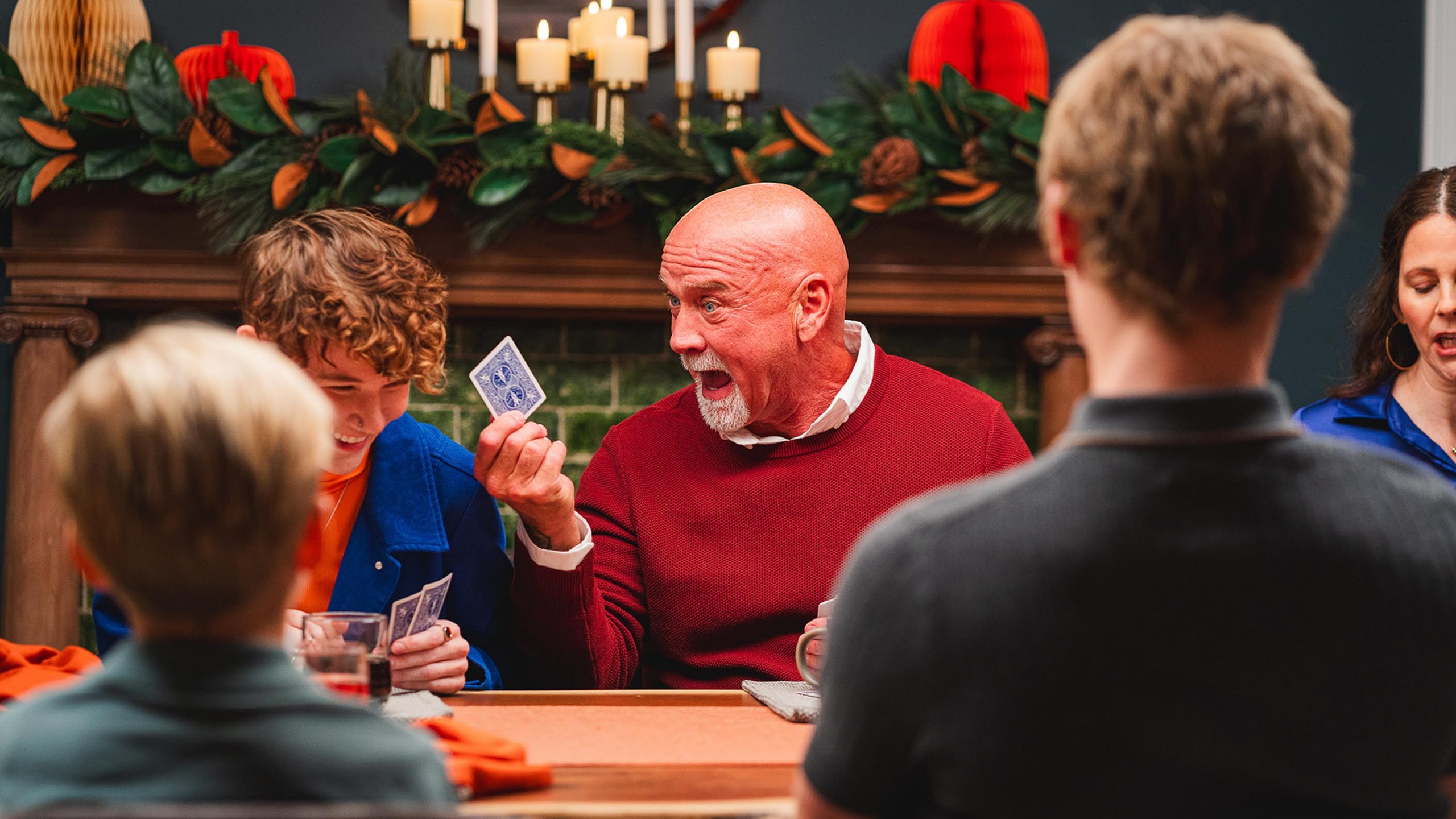
This article is presented by Bicycle Cards.
Being with friends and family around Thanksgiving isn’t just about spending time—ideally, you’re figuring out how to spend quality time. You can’t just eat food the whole day, and watching movies nonstop isn’t the answer either. Instead, classic card games can bring everyone closer together.
Thanksgiving is an ideal time for great holiday games, and because the event is all about tradition, some of the best games to play with together are the extremely old-school ones.
Maybe you’ve all just gone to a family viewing of Moana 2—if so, there are some great new Moana-inspired playing cards. There’s also some really cool cocktail recipe playing cards, which can be perfect for an adult-centric Thanksgiving or Friendsgiving game night! Either way, having a great deck of playing cards is essential, and for this Thanksgiving, there are some excellent games that you can play with family or friends, some of which you probably haven’t thought about in a very long time. There are plenty of other classic games you can share with friends, some of which are kind of deep cuts! (See what we did there?) Here’s a quick refresher on three classic games, just in time for a big gathering of family or friends.
Rummy
This is a game you probably remember your parents playing, or somebody teaching you how to play on a road trip in the ’90s. It’s actually ridiculously fun and the rules are a bit more straightforward than you might remember.
The Goal
Like a lot of these games, the goal here is to get rid of all of your cards. You can do this by either creating “melds” or “runs” of three or four cards. Melds are the same kind of card (i.e. all Kings) and runs are sequential cards of the same suit (i.e. a 2, 3, and 4, but all of hearts.) You get rid of your cards by playing these runs and melds when you have them.
The Set-Up
One dealer passes out the cards, one by one to each player. But, keep in mind, if there are two players, everyone gets 10 cards, if there are three to four players, everyone gets seven cards, and if there are five to six players, everyone gets six cards. In all cases, there’s a draw pile of cards left over.
How to Play and How to Win
Basically, you want to get rid of your cards as fast as possible, and that means creating melds and runs. This is done in turn, and when you have a complete meld or run, you place those three (or four) cards on the table. The interesting thing is, as the game goes on, other players can add to existing melds or runs that are face-up on the table. You don’t own those melds and runs! Once they’re on the table, they’re fair game!
The first person to get rid of all their cards is the winner. If you’re playing multiple rounds, you can score these rounds by adding up points based on the cards left over in the hands of the remaining players. The points break down like this: face cards are worth 10, 2-10 are worth their face value, and an Ace counts as one point.
Wondering what the “Rummy” refers to? That’s when a player gets rid of all their cards in one turn. This moment is a combination of luck and skill, sort of like the crack shot of a drunken pirate.
Spades
You’ve probably heard of Spades, but this one is a little more obscure in the world of classic card games. That said, it’s fairly easy to learn, and very fun to play once you get the hang of it. Here’s how to get into it!
The Goal
Spades is a game where you’re trying to score points. You do this by winning “tricks,” which are, essentially, just another word for the amount of points you think you’ll win in a round of gameplay. Part of the twist of Spades is that you’re not just playing one hand. It’s all about the long game!
But the easiest thing to remember is that you’re trying to score points, and that’s done by winning “tricks,” which constitute points.
The Set-Up
After deciding on a dealer, all the cards are dealt, one at a time, starting with the player to the left of the dealer. You can then arrange your cards in your hands by suit. At this point, everybody decides—or “bids”—on how many “tricks” they will be able to take. You do this by saying a number out loud. You can’t not do this—no passing. Don’t worry about suits, because the highest card in the game is always spades, which is why it’s called Spades.
How to Play and How to Win
This is a scoring game, and you win by adding up your score over the course of various hands, or rounds, played. Most people like playing to 500 points, but 200 is okay too. Gameplay goes like this, the player on the dealer’s left plays a card, and then the next person tries to follow suit. If they can’t, they can play a trump card, or discard. The trick (or round) is won by the player who plays the highest-value card. If you win the trick, you lead the next round.
You keep doing this until all the cards have been played and there’s nothing left. You can’t lead with a spade unless that’s the only card in your hand.
Each hand is worth 13 tricks, but the scoring is a little more complicated. You get 10 points for each trick you bid, and you get one point for each trick you won beyond what you bid. So, if you bid 10, then your score is 100 if you make 10 tricks. If you win less than the number of tricks you bid, you “break contract,” and that means you get zero.
Again, the idea is to play to 200 or 500 points. But, ultimately, your family or friends can decide ahead of time on how many points constitute an overall win.
Nerts
Strangely, Nerts is a form of Solitaire that is enhanced by participating with other players. It sounds a bit complex at first, but once you realize that it’s basically a race, it’s extremely fun. The one thing to remember here is that you need multiple decks of cards because every player has their own.
The Goal
It’s a race to get rid of your cards, but the key is that you have to start at the bottom with aces, and build up from there. The twist here is that everybody has their own deck, and the way you get rid of your cards requires you to eliminate the “Nerts” piles. One way to think of this is a sort of precursor to collective card games like Magic: The Gathering, but much more rudimentary.
The Set-Up
With their own decks, each player creates a “Nerts pile” of 12 cards face down and a 13th card face up. Then, you’ve got four more face-up cards, which will create “work piles.” You leave the rest of the cards in a deck as a “stock.” When you turn the cards face-up, you’ll make a “waste pile.”
There also needs to be a common era, a kind of home base that all the players can access. You’re working on your own, but there has to be a kind of central hub, like the bridge of a starship, where everybody can build their “foundations.”
How to Play and How to Win
The main thing you’re trying to do is get rid of your Nerts piles, which you can only do by moving cards from the Nerts pile onto work piles or foundation piles. This can only be done by sequencing the cards, starting with the Ace, and building up to the King. Essentially, you get rid of your Nerts cards by sequentially moving specific cards into corresponding piles; if a work pile or communal foundation pile has a 2 facing up, you can add a 3 from your deck.
All of this can be happening simultaneously, to be clear. So while you’re trying to move your Nertz pile cards to foundations, other players are doing the same thing. You can’t remove cards from the common area, and you can’t mess with somebody’s basic tableau.
The first person to get rid of all their Nerts pile says “Nerts!” out loud, and then the game ends because that person has won! If you think of it as solo-solitaire, that is also a race, Nerts becomes very fun and easy to learn.
The post The Best Card Games to Play This Thanksgiving appeared first on Den of Geek.




